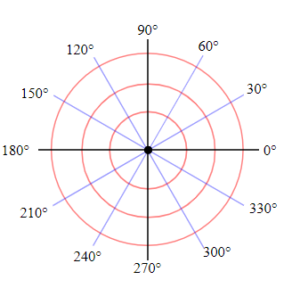< List of probability distributions < Circular distribution
A circular distribution (also called a polar distribution) has probabilities that are concentrated on the circumference of a circle, where each point on the circle indicates a direction.

These distributions have no true zero and arbitrary high or low values. Examples:
- Compass direction.
- Hours on a clock.
- Months of the year.
Circular distributions can be discrete distributions (called circular lattice distributions) or absolutely continuous (with respect to the Lebesgue measure on the circumference [1]. The Lebesgue measure is an extension of the “usual” length equation l = b – a to arbitrary sets including those found in complex analysis and integral calculus.
These distributions are a way to assign probabilities to different directions; they can also be used to define a directional distribution.
Circular distribution properties
Range (in radians): [0, 2π) or [-π, π).
A probability density function for the absolutely continuous circular distribution has the following properties [1]:
- f(θ) ≥ 0;
- ∫2π0 f(θ) dθ = 1
- f(θ) = f(θ + k * 2π) for any integer k (i.e., the function f is periodic)
Note though, that defining a circular probability distribution with a function can be challenging because of the periodic nature of the circle: every 2π, the distribution “repeats”, giving the same value to say, angles 40 and 760 degrees. The function defining the distribution must also take into account the direction and orientation. Thus, an alternate way to define the circular distribution is the following function, which is the circular counterpart of a distribution function for a random variable on the real number line [2]:
F(θ) = P(0 < Θ ≤ θ), 0 ≤ θ ≤ 2π,
F(θ + 2π) – F(θ) = 1, -∞ < θ < ∞.
References
- Jammalamadaka, S. and Sengupta, A. (2001). Topics in Circular Statistics. World Scientific.
- Pewsey, A. et al. (2013). Circular Statistics in R. OUP Oxford.